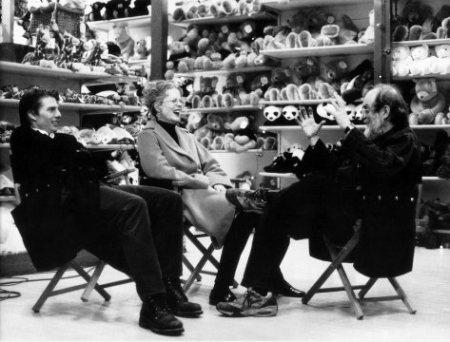After nearly eight months, Stanley Kubrick is finally reaching its conclusion this weekend—Sunday is your last chance to see this fantastic overview of Kubrick’s entire career, from his early days of photojournalism to his last and unrealized films. (We expect a busy closing weekend, so buy your tickets in advance.)
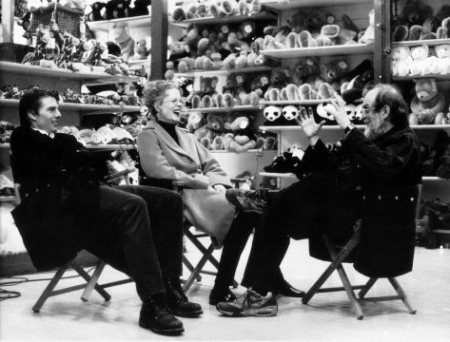 Eyes Wide Shut, directed by Stanley Kubrick, 1999, Tom Cruise, Nicole Kidman, and Stanley Kubrick during a break in shooting on the set. © Warner Bros. Entertainment Inc. Photo: Manuel Harlan
Eyes Wide Shut, directed by Stanley Kubrick, 1999, Tom Cruise, Nicole Kidman, and Stanley Kubrick during a break in shooting on the set. © Warner Bros. Entertainment Inc. Photo: Manuel Harlan
We should note that, while the Kubrick exhibition is going away, we’ve still got a wealth of Kubrick material for you to enjoy—download our free Stanley Kubrick app for interviews with Kubrick himself, numerous directors and collaborators, archival material, and more.
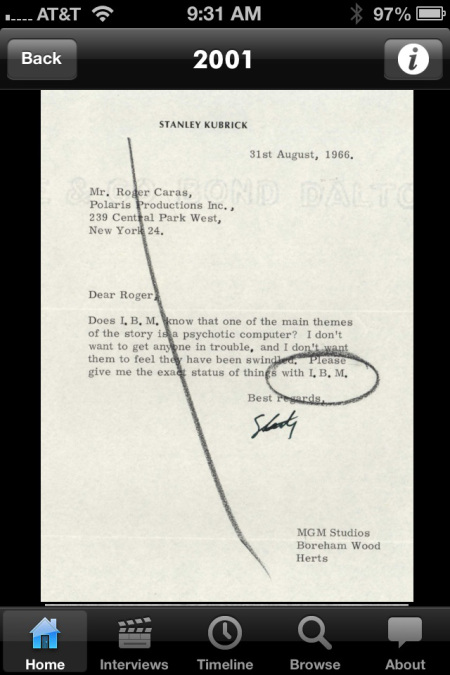 Letter, courtesy of the Stanley Kubrick Archive at the University of the Arts, London.
Letter, courtesy of the Stanley Kubrick Archive at the University of the Arts, London.
Here on Unframed we’ve had a lot of fun delving into different aspects of the exhibition, talking to some of Kubrick’s collaborators, and reminiscing on the ways Kubrick has impacted our lives. Today we thought we’d take a look back on some of the past blog posts we’ve devoted to the show.
Our initial post on the show went up before the exhibition was ready for viewing—we detailed all that went into installing a massive exhibition full of artworks, videos, models, and more.
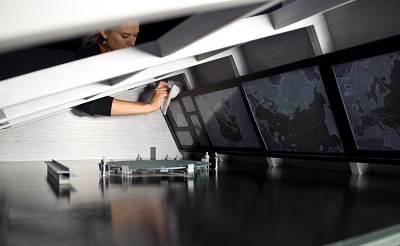 War Room Model, scale 1:20 Reproduction: Workshop Jörg Kallmeyer, Frankfurt am Main, Dr. Strangelove Or: How I Learned To Stop Worrying And Love The Bomb, c. 2003, Deutsches Filmmuseum, photo © 2012 Museum Associates/LACMA
War Room Model, scale 1:20 Reproduction: Workshop Jörg Kallmeyer, Frankfurt am Main, Dr. Strangelove Or: How I Learned To Stop Worrying And Love The Bomb, c. 2003, Deutsches Filmmuseum, photo © 2012 Museum Associates/LACMA
Elvis Mitchell, curator, Film Independent at LACMA, astutely draws on Kubrick’s background as a photographer, and his ability both to compose and to edit out what is inessential: “The best photographers—from Mary Ellen Mark to James Van Der Zee to Robert Capa—are artists who function both as directors and cutters: each shot is basically an entire movie tailored into a single frame…. Kubrick is first and foremost a photographer, like them, and almost any still from his monochromatic movies tells a complete story.”
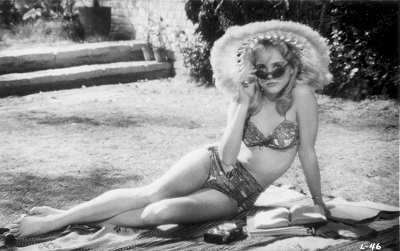 Sue Lyon as Dolores “Lolita” Haze, Lolita, directed by Stanley Kubrick, 1960–62, GB/United States, © Warner Bros. Entertainment Inc., photo by Bert Stern
Sue Lyon as Dolores “Lolita” Haze, Lolita, directed by Stanley Kubrick, 1960–62, GB/United States, © Warner Bros. Entertainment Inc., photo by Bert Stern
By far our most popular Kubrick-related blog post was written by Tim Deegan, our Director of Guest Services. Many years ago Tim was an intern for Kubrick during the making of 2001; he recalls how Kubrick literally went to a moviehouse to fix a camera projecting his film: “Kubrick did not like the distraction of fuzzy edges,” Tim writes, “so he brought his chisel into the projection booth to clean the edges so 2001 would be seen with crisp, clean edges on the screen.”
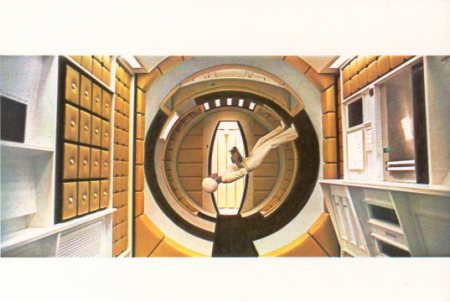 2001: A Space Odyssey, set photo, directed by Stanley Kubrick, 1965-68
2001: A Space Odyssey, set photo, directed by Stanley Kubrick, 1965-68
We talked to actor Matthew Modine, star of Full Metal Jacket, about the making of that film as well as his Full Metal Jacket Diary app for the iPad. “[Kubrick is] often accused of being cold or inhuman, that his films have such a hard veneer,” Modine says. “I don’t think that’s the case at all. What Stanley Kubrick did, perhaps better than any filmmaker, was take an honest look at human beings….not what we hope to look like, but who and what we are.”
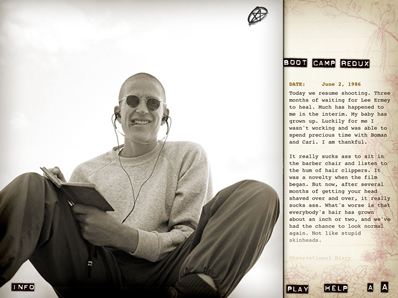 Screenshot from Full Metal Jacket Diary
Screenshot from Full Metal Jacket Diary
As mentioned above, we have our own app for the exhibition as well. Among the many highlights of that app is a video from director David Slade (Twilight: Eclipse, among others), who recalls being at Kubrick’s offices on the day Kubrick passed away. On Unframed we ran an outtake from our interview with Slade, in which he talked about his reaction to seeing A Clockwork Orange for the first time.
[youtube=http://youtu.be/smTbYioJ8KU]
Assistant curator of film, Bernardo Rondeau, gave an overview of our initial Kubrick film series and by extension an overview of Kubrick himself.
On the topic of Kubrick’s complete body of work, we asked you what your favorite Kubrick film was and why, you all picked nearly every single one of his films (sorry Killer’s Kiss). Here’s what you said.
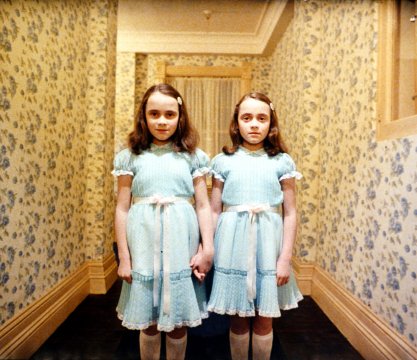 The Shining, directed by Stanley Kubrick, 1980, The daughters of Grady (Lisa and Louise Burns). © Warner Bros. Entertainment Inc.
The Shining, directed by Stanley Kubrick, 1980, The daughters of Grady (Lisa and Louise Burns). © Warner Bros. Entertainment Inc.
We’ve done a number of Kubrick-related film series since the show began, including the great “Science Fiction after Kubrick.” Sean Savage of the Academy Film Archive wrote about Saul Bass’s sole feature-length film, Phase IV, which has some resonance with 2001 and was screened in that film series. (Visitors to the exhibition will also see Bass's sketches for The Shining, ultimately rejected by Kubrick.)
[youtube=http://youtu.be/IuhgBvOWb_k]
A few of Kubrick’s infamously unmade films are highlighted in the exhibition too—Napoleon and The Aryan Papers, as well as his early research into A.I., later made by Steven Spielberg. For The Aryan Papers, we invited artists Jane and Louise Wilson to create a video piece in response to the unmade film. Their work, Unfolding the Aryan Papers, features actress Johanna Ter Steege, whom Kubrick had cast to play the lead in his film.
[youtube=http://youtu.be/7poypt6izFw]
It’s easy to talk about how impactful Stanley Kubrick’s films are. Our last post on the exhibition illustrated that directly when educator Valentina Mogilevskaya showed us how some high school students connected to the Kubrick exhibition and created work inspired by 2001.
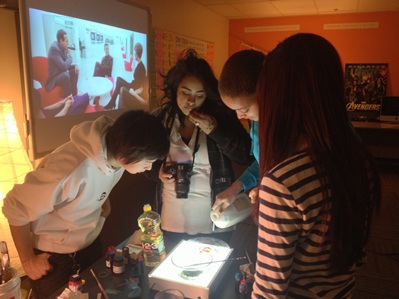 Students at HeArt Project Hollywood Media Arts Academy using vegetable oil and paint to create stop-motion animation inspired by the Star Gate sequence in 2001: A Space Odyssey
Students at HeArt Project Hollywood Media Arts Academy using vegetable oil and paint to create stop-motion animation inspired by the Star Gate sequence in 2001: A Space Odyssey
Eight months is a long time for a temporary exhibition to be on view—but honestly, Kubrick never got old. For all the topics we covered on the exhibition, we've still got a list as long as Jack's manuscript in The Shining, full of material we never even got to. It's been an inspiring show all around, and judging from the many photos on Instagram, Tumblr, and Pinterest, it inspired you too. Thanks for coming to see it; we loved being able to offer it to you.
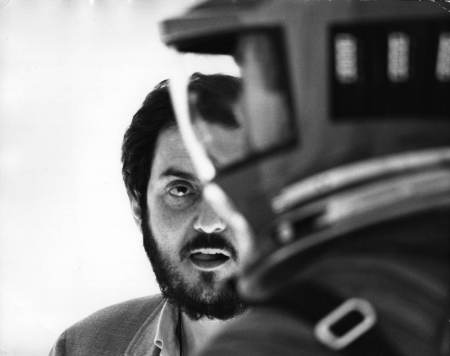 2001: A Space Odyssey, directed by Stanley Kubrick (1965-68; GB/United States). Stanley Kubrick on set during the filming. © Warner Bros. Entertainment Inc.
2001: A Space Odyssey, directed by Stanley Kubrick (1965-68; GB/United States). Stanley Kubrick on set during the filming. © Warner Bros. Entertainment Inc.
Scott Tennent



